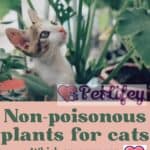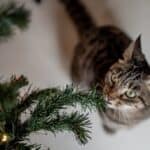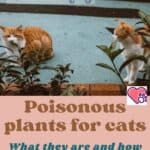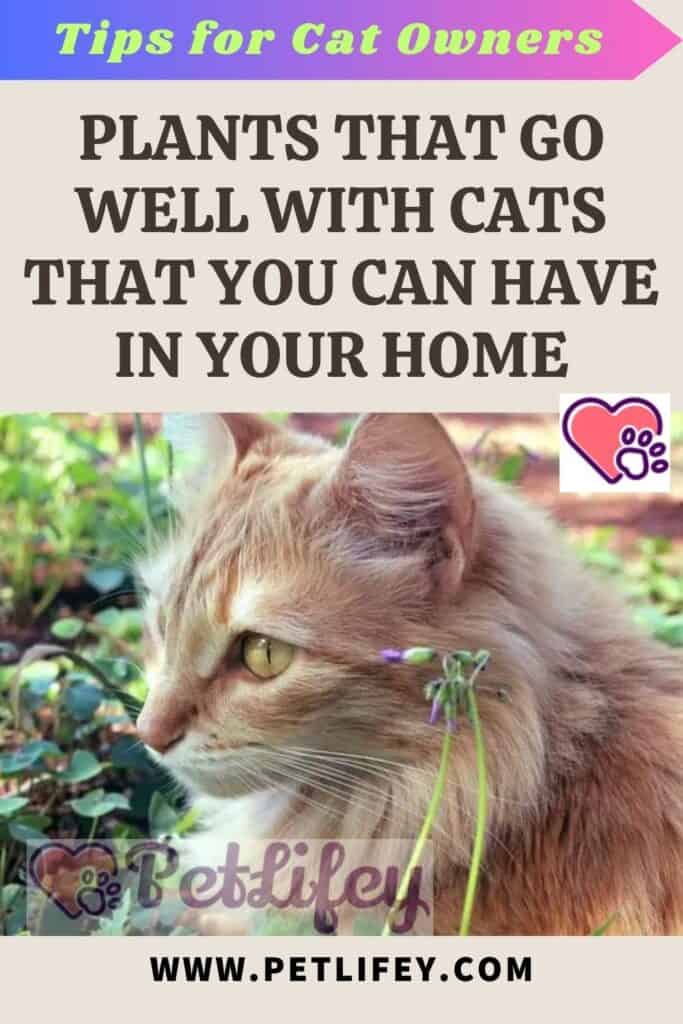
Many plants attract our cats, who want to taste and eat a little of everything they don’t know yet. But often this doesn’t do them any good. So let’s choose cat plants, safe for them and beautiful for our balconies and gardens.
Isn’t it nice to have a nice balcony or garden full of flowers and plants? Of course, it would be if our cats didn’t eat all these wonderful plants just to taste them, perhaps with negative consequences on their health. But what are the “cat” plants, the ones that are safe for them that we can also keep safely at home, without being afraid that they may cause discomfort for our cats?
The most beautiful cat plants
If we want to prevent cats from biting or eating these plants, a good way to discourage them is to sprinkle them with lemon juice diluted in water. This can drive cats away without harming them or the plants, perhaps when they have already been a little too nibbled and damaged.
Flowering plants suitable for cats
Violets and violets
Violets, along with tricolor violets and horned violets (Viola l.), Are beautiful plants that are safe for cats but also edible by humans. They can be added to a salad, to a fruit-based dish, but also to pasta dishes or drinks.
Nasturtium
Nasturtium (Tropaeolum majus L.) is another simple flower to grow and edible for humans.
Dandelion
A medicinal herb useful for both humans and animals, from dandelion root (Taraxacum Officinale) an ointment is produced to relieve itching in case of allergies.
Carnations of India
Marigold, or Carnations of India (Tagetes L) is a plant with very beautiful flowers, with bright colors. It is also used to ward off parasites, especially in gardens that take advantage of this characteristic of its scent.
Lavender
The very famous lavender (Lavandula L.) can be eaten by cats without problems, and is useful both for scenting the environment and in the kitchen, perhaps in a dessert.
Pink
The queen of flowers, the rose (Rosa L.), does not give cats problems except for its thorns.
Cosmea (Cosmos bipinnatus Cav.)
Cosmea is a summer plant with dark pink and white flowers, and can reach 180 cm in height.
Zinnias (Zinnia L.)
Zinnias are ornamental semi-rustic plants. It is a harmless flower for humans, cats and dogs, and is indeed edible, used both in infusions similar to chamomile and fried in batter or as a decoration.
Cat’s claw
Cat’s claw, common name of Uncaria Tormentosa, takes its name from the thorns that resemble feline nails. It can be used in physiotherapy, as it has immunostimulating, antiviral and anti-inflammatory properties.
Leon’s mouth
Snapdragon (Antirrhinum majus) is a colorful annual plant that can reach up to one meter in height.
Malvone
Unlike mallow (Malva L.) which has a laxative effect, mallow (Alcea rosea) is harmless to cats. It is a perennial plant, suitable for high flowering borders.
Idraste
A herbaceous plant that is also useful as a natural disinfectant, Hydraste (Hydrastis canadensis) can also reduce swelling of the eyes in case of allergies or infections.
Portulaca
Another easy-to-grow perennial, Portulaca (Portulaca Grandflora) has large blooms in various colors, is widespread in nurseries but becomes a weed if not kept in pots.
Monarda
Monarda (Monarda Didyma) is an edible plant, with bergamot-scented leaves – also useful for keeping mosquitoes away – and very beautiful flowers. It is an aromatic perennial.
Agastache
Agastaches are perennial plants of the mint family. They are very easy to grow because they grow well in difficult terrain; they are also usable in the kitchen and if kept in the garden it would be better to have a bee-sized garden, capable of attracting butterflies. It is also called “hummingbird mint”.
Non-flowering plants suitable for cats
Lemongrass
The famous lemongrass – also called Lemongrass (Cymbopogon) – also very useful in the kitchen and to keep mosquitoes away, has a catnip-like effect on many cats.
Licorice root
Licorice is often associated with sweets and candies, but licorice root (Glycyrrhiza glabra) is a perennial herb that cats love because, thanks to its anti-inflammatory properties, it can relieve itching in case of allergies. It can also help in case of respiratory or digestive problems, liver poisoning.
Other cat and non-cat plants
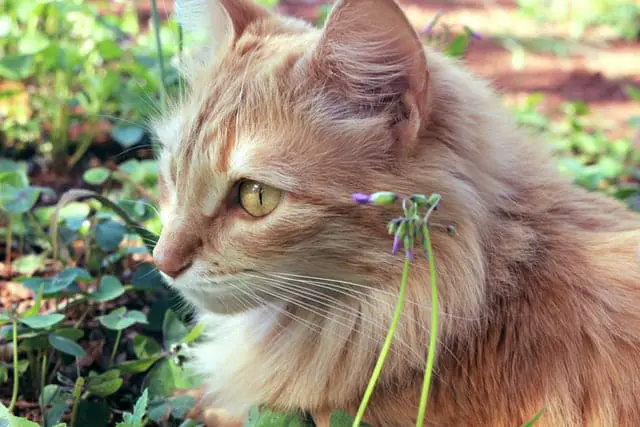
For some plants whose toxicity is not clear – due to conflicting opinions – it would be better to leave the last word to the vets: primrose, hibiscus, honeysuckle are safe for some sites, and toxic for others. Some cats may be more sensitive to some plants, perhaps non-toxic or safe for everyone. In any case, we consult our veterinarian in case of ingestion of potentially toxic plants by our cat.
Other plants not recommended but usable without problems according to some sources:
- Ribbon (Chlorophytum Comosum) which is not recommended for hallucinatory symptoms
- Jasmine (Jasminum L.), the one that blooms only and sheds its leaves, unlike yellow jasmine and false jasmine which are toxic
- Blackberry leaf (without thorns)
- Basil
- Trycirtis, from the lily family
Problem-free plants according to some cat owners:
- Primrose
- Hypomea
- Turmeric
- olive
- Raspberry
- Lemon
- Tomatoes
- Peas
- Eggplant
- Cucumbers
- Laurel
- Chrysanthemums
- Iris
- Mother-in-law pillow
- Geraniums
- Peas
- Agave (also useful for scratching)

